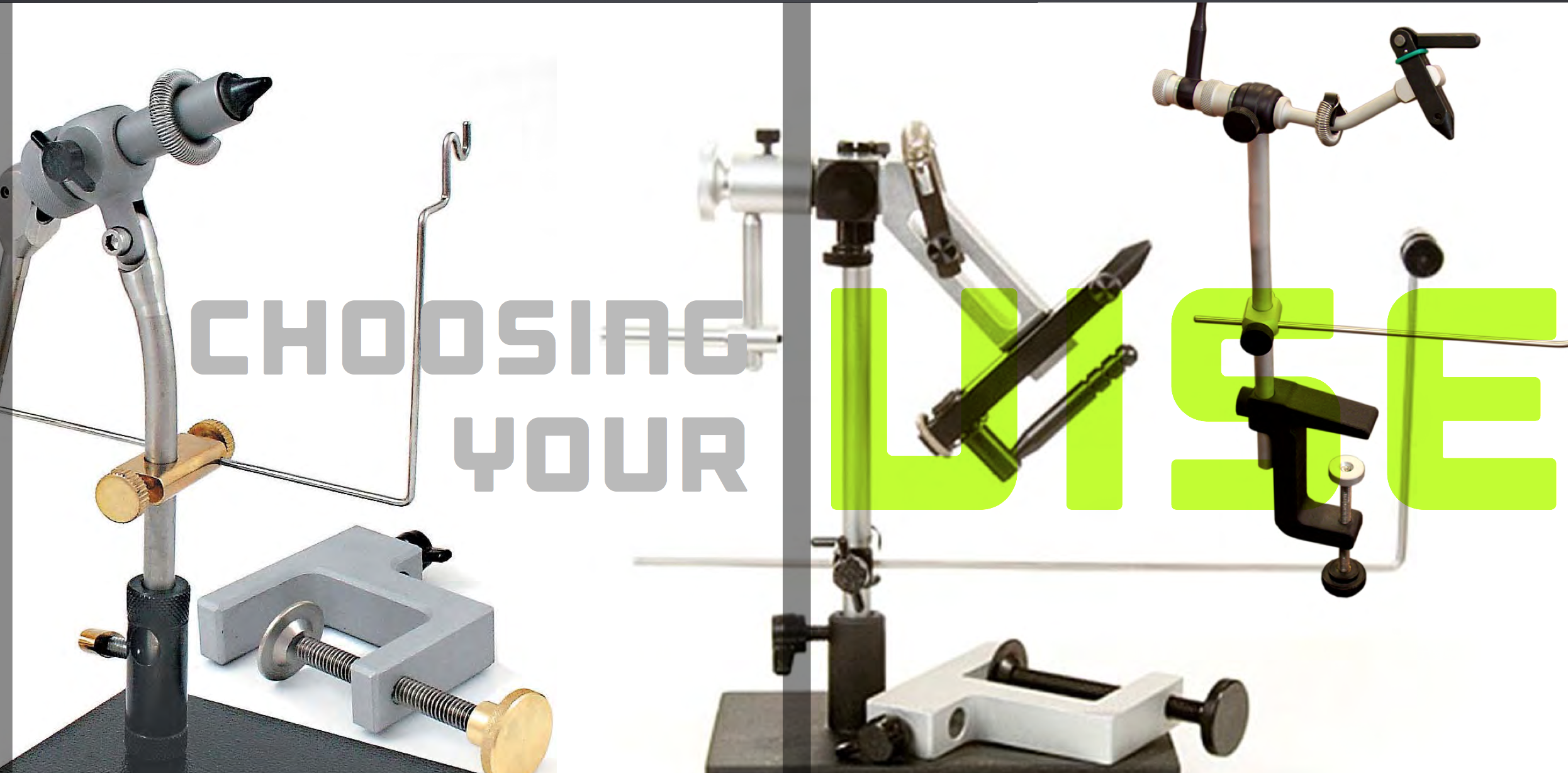A good fly tying vise is the core of any fly tier’s tool kit.
Sure, the late lee Wulff tied tiny dry flies without any vise at all, but unless you want to handicap yourself in your tying, a quality vise is crucial. You can spend pretty much anything you want to on a vise – from $15 for a starter version to $800 for a top-line Renzetti. so how do you choose? what do you look for?
First off, high-quality tools make life easier; poor-quality ones create frustration. so choose the best vise you can afford. it should last you a lifetime (at least). So keep in mind that the top-rated, most expensive vise might not be the one that works best for you. Test them out, just as you would when choosing a rod. If you’re going to be tying a wide range of flies, from little trout patterns to big sailfish puppets, make sure that your vise’s jaws can accommodate a range of hook sizes from #20 to at least #4/0. some vises require an alternate set of jaws to get this kind of range; some vises can do it all with just one set of jaws. The manufacturer will specify the plausible range of hook sizes for a particular vise, so keep in mind the kind of fishing you do and the size of the flies you use most. The good news is that you don’t have to spend a fortune to get a high-quality vise. you can get something decent for around so in addition to thinking about the size of the flies you’ll be tying, you need to think a bit about where you’ll be tying them. our overall preference is for the pedestal style, which may or may not be ideal for you. If possible, go to a fly shop and play around with the vises there – it’s hard to tell if a vise is really right for you if you’re just looking at pictures.
$50, and $200 will buy you a vise that you’ll never outgrow. of course, more expensive vises may have finer machining and some extra features, and if you can afford one, by all means go for it.

As noted above, not every vise will please every tier. For example, some tiers prefer a c-clamp model that’ll attach to a table via screw pressure. others prefer a pedestal base. which one you choose is personal preference, but there are all kinds of tradeoffs: for example, if you travel with your vise, the pedestal type is heavy and annoying to carry, but it works on any surface. The c-clamp is much lighter, but sometimes, when you get to your destination, you’ll find that there’s no work surface thin enough to accommodate the clamp.
Things to Consider
1. Fit and Finish: This is somewhat subjective. We tied on a Thompson Model A vise for many years, and it worked fine. It was the Pflueger Medalist of vises – inexpensive, not much to look at, and clunky, but it did its job. That said, we greatly prefer working with more precisely engineered tools. Most any $100+ vise on the market these days will be super- functional and aesthetically satisfying.
2. rotary capability: Rotary tying involves spinning the hook that’s in the vise’s jaws around and underneath the thread (or other material), rather than wrapping material around the hook. Some people swear by rotary, some don’t like it. No matter which camp you’re in, it doesn’t hurt to get a vise with rotary capability if it has the other features you’re looking for.
3. Jaw grip: This is key. The jaws should hold a hook tightly, with no slippage. This is where the more expensive vises excel: they tend to hold a hook much more firmly than cheaper models. This will considerably increase your satisfaction at the bench.
4. C-Clamp Quality: If you choose a C-clamp vise, make sure that it locks down firmly. It should not move or jiggle. The clamp should not leave any scratches or marks on your table.
5. adjustability: The vise should be capable of holding a broad range of hook sizes. Its height should be adjustable so you can work on a variety of table heights.
6. accessories: Think about whether your vise can be customized with a bobbin cradle, material clip, parachute tool, waste receptacle, or other accessories that you might find useful.

There are plenty of vises out there with all these features; selecting one really boils down to budget and personal preference. Be sure to take a look at vises by dyna-king (our favorite), renzetti (most of the world’s favorite), hMh, peak, and griffin. it’s best to stay away from the super-cheap vises if possible; they generally will not hold a hook securely, which is a pain, and they wear down quickly.
i


